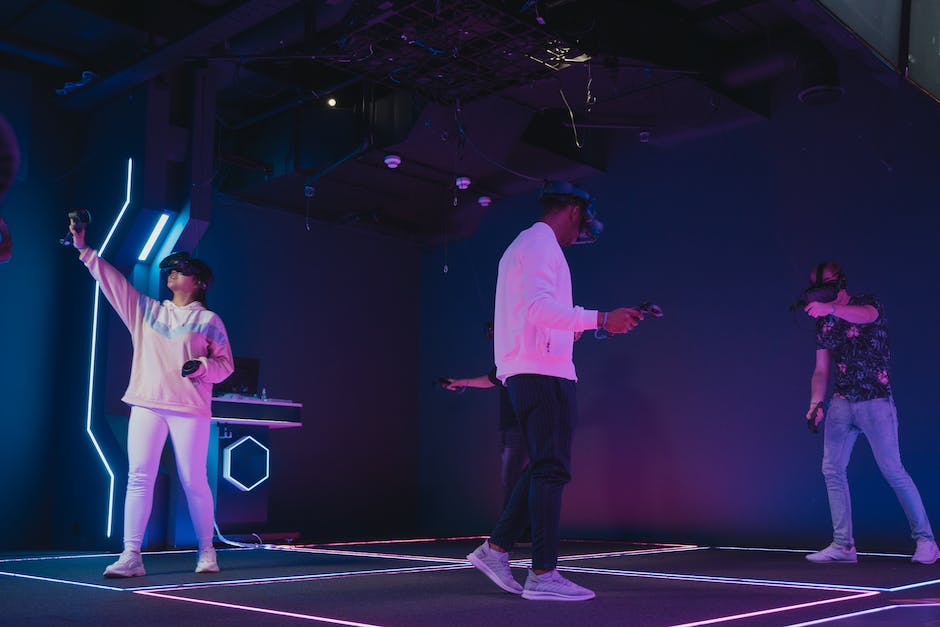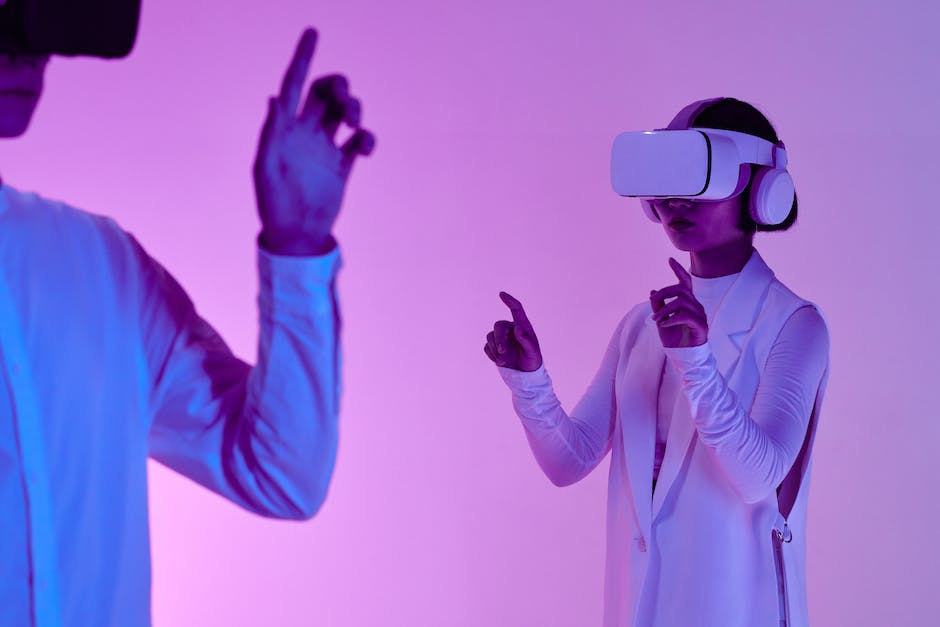The digitized planets of electronic sports (e-sports) and the immersing reality of virtual reality (VR) are having a revolutionary impact on the global entertainment landscape. From their roots to their skyrocketing popularity, these phenomena have transformed the way we perceive gaming, extending beyond conventional boundaries. This exploration delves into the fascinating journey of e-sports and VR, the state-of-the-art technology behind their magic, and the groundbreaking games that have captured the hearts of millions. As we curb the corners of this digital frontier, we will unravel how the fusion of e-sports and VR is redefining gaming experiences and exciting potentials for the future.
Overview of E-sports and Virtual Reality
E-Sports: A Journey from Obscurity to Recognition
Once upon a time, delighting in video games was thought to be just a pastime, a frivolous endeavor designated for nerdy kids in their parents’ basements. Yet, here we stand in a world where playing video games professionally – being a part of the realm known as E-sports – can make you a millionaire and a global sensation.
E-Sports, or electronic sports, is the rapidly growing sector of competitive video gaming where professionals and amateurs alike duke it out, either individually or as part of teams, to achieve gaming glory in organized, multiplayer video game competitions. The emergence of E-Sports took off in the late ’90s, paralleling the rise of the internet, where the digital landscape offered an arena for gamers across the world to compete.
In terms of advancements, E-Sports have seen an astronomical rise. From games broadcasted on meagerly populated online platforms, E-Sports events have transformed into grand, stadium-filled spectacles. The technology used in these events has also taken leaps and bounds, from basic computers to state-of-the-art gaming systems, high-speed internet, and cutting-edge streaming capabilities.
The current market size of E-Sports correlates with its explosive popularity. Today, it’s an estimated $1.1 billion industry, with an engaged audience crossing the threshold of 495 million people. This immense popularity has seen a diversified range of games draw gamers and spectators alike, from the high-octane action of Call of Duty and Counter-Strike to the strategic intricacies of Dota and League of Legends.
Virtual Reality: The Next Step in Immersion
Venture further into the digital domain, and one will find another budding phenomenon – Virtual Reality, or simply VR. VR is a game-changing technology that alters our perceptions of reality by immersing us in an artificial, digital environment.
Its origins track back to the mid-twentieth century when Morton Heilig invented the ‘Sensorama’ machine, designed to stimulate multiple senses. Yet, the version of VR familiar to us, where users don a headset to step into a 3D virtual world, came to fruition in the ’90s with the advent of VR arcades. The technology and devices used have been steadily improving, offering a more realistic and immersive experience.
Virtual Reality has expanded its horizons, quite literally, by fusing with E-Sports. Some popular games that utilize VR in E-Sports include Beat Saber, Echo Arena, and Pavlov VR. These games offer a more immersive and engaging gaming experience as players aren’t just pressing buttons — they virtually live the game.
In the context of the e-sports market, platforms like VRChat and Rec Room offer multiplayer experiences where users can socially interact in a virtual setting. FPS games like Onward and Skyfront VR are massively popular among FPS fans who are looking for an engaging and immersive gaming experience.
There is an exciting, rapid evolution occurring in the digital universe, with E-Sports and Virtual Reality at its heart. These two spheres of technology and entertainment are intertwined, shaping our present and future. Their journey into groundbreaking advancements opens the door to thrilling future possibilities.

Photo by mahdibafande on Unsplash
The Convergence of E-sports and Virtual Reality
Delving into E-Sports and Virtual Reality
Imagine stepping onto a digitally-created battlefield or diving deep into the core of a strategic mission. This is the realm of e-sports, a niche carved out in the digital world. Now, visualize this scenario in a three-dimensional existence where players not only control on-screen characters but actually inhabit their roles. They maneuver through immersive landscapes and partake in thrilling action. The story being told today is about the convergence of e-Sports and virtual reality.
Transition in E-Sports: From Observing to Engaging
Virtual reality (VR) has been steadily gaining ground in e-sports, offering audiences and players a more immersive and immediate gaming experience. Where we used to watch the action through a screen barrier, we can now participate within the game universe. VR-based e-sports tournaments are catching on, with games like Echo Arena taking the lead. This game, where players maneuver in zero-gravity to score goals, combines strategy, skill, and physical prowess in a unique way.
As VR continues to grow, players are given a completely new arena of opportunities that goes beyond standard gaming. Mixed Reality situations, such as those designed by World of Tanks developer Wargaming, allow e-sports fans to feel tank cannons’ vibration and even experience the effect of incoming fire – a far cry from the absence of tactile feedback in traditional gaming.
Augmenting Player Experience
Merging e-sports and VR is not merely about making the gaming environment more ‘call-to-reality,’ but it’s about redefining the entire gaming experience. Traditional e-sports might test your strategic thinking, teamwork, and response rate, yet VR brings in an extra level of physical involvement. The fusion of mind and body, strategy and reaction, are what will shape the future of e-sports.
Virtual Reality as Training Grounds
The combination of e-sports and VR is not just making its mark in formal competitions. It’s also providing unique opportunities for players to train and practice by simulating game situations in a life-like manner. VR expands the gaming experience, allowing in-depth understanding of game mechanics – this technology positively impacts both the front-end competitions and the backend training sessions required in sporting.
A Fusion of Virtual and Physical Worlds
This blend of e-sports and virtual reality heralds a paradigm shift in the gaming world. As we pave the way to a future where the digital playground is no longer restricted to screens but extends into boundless virtual realities, we look forward to even more immersive models of competitive e-sports. This hybridization not only enhances the gaming experience but also redefines our perception of sports and competition.

Challenges and Controversies Surrounding VR in E-sports
Within the Virtual World
In that one instant, amidst the deafening cheers of a high-stakes match of ‘League of Legends’, a popular e-sports title, there was an indescribable high. Amid this powerful sound wave, a new medium of experience was silently seeping into our consciousness – the use of virtual reality in e-sports.
The fusion of VR in e-sports had an allure that was undeniable; a potent mix of immersive experiences and the adrenaline surge from digital sports competitions. However, with the integration of this cutting-edge technology, a host of challenges and controversies tagged along.
Hidden Realities
Entering the VR landscape was easy, exiting was harder. Much like forgetting a vivid dream, the lines between reality and virtual reality became blurred, ramping up the risk of VR addiction. The effect this synthetic world had on players brought forward health concerns ranging from digital motion sickness to eye strain, fatigue, and in some cases, severe disorientation.
Additionally, the e-sports enthusiasts often romanticized the adrenaline-fueled thrill of VR without fully understanding its potential implications on their physical and mental wellbeing. The potential long-term effects of extensive VR usage were still largely unknown, a controversial area that begged for a deeper level of study and understanding.
Technical Hiccups
With virtual reality came technical uncertainties. Web connectivity issues, hardware compatibility, and software glitches were just a few of the challenges faced when navigating this new field. The sheer expense of high-quality VR systems also presented a barrier, limiting accessibility to the elite few and drawing criticism surrounding the democratization of e-sports.
Interaction in VR often felt clunky, the illusion shattered by the limitations of the current technology. The hand-eye coordination we take for granted in the physical world felt bizarrely hard to replicate in the virtual, and the potential for a seamless experience was often marred by awkward control mechanics.
The Ethical Landscape in Virtual Reality E-sports
The emergence of virtual reality (VR) in e-sports has sparked an intense debate concerning its ethical dimensions. Critics emphasize that VR can create a disparity in competition, where the quality of a player’s gaming equipment can lead to significant advantages on the virtual playing field. Additionally, the current absence of a comprehensive set of rules and regulations regarding VR use in e-sports leaves room for players to exploit certain loopholes.
Indeed, VR’s transformative effect on e-sports is unquestionable, but the rapid pace of its adoption, without enough time dedicated to research and contemplation, has put e-sports at the nexus of rapid technological progress and new, unique challenges. In short, while the immersive potential of VR in e-sports is profoundly exciting, it also carries with it a plethora of unresolved controversies and unforeseen implications.

Future of E-sports and Virtual Reality
Envisioning the Future of E-sports and Virtual Reality
Stepping into the sphere of e-sports and virtual reality (VR) is akin to entering a secluded, velvety space humming with unyielding energy and pulsating, vivid reality. One could observe a normally timid and introverted individual metamorphosing into a fearless warrior in a cosmic battlefield, or a thoughtful tactician commanding armies in a historical duel. This is the transformative power that VR combined with e-sports possesses, challenging and altering our physical constraints in extraordinary ways.
Painting the Picture: Upcoming Technologies
The future of e-sports and VR is a humming thread woven into the tapestry of the digital realm. It whispers of potential, of new beginnings, announcing the arrival of technologies that are yet to be conceived. Think about the augmenting haptic feedback in VR devices. Imagine donning a pair of gloves that imitates the tactile experience of handling a bow and arrow or wading through turbulent waters. The sound of the bowstring being pulled or the sensation of water rushing against the hands could feel breathlessly real, making escapades in the virtual world even more immersive.
Feeding the Growth: Possible Expansion Areas
There’s both an urgency and an inevitability to the growing expansion of e-sports and VR. Advances have already transformed these fields from niche hobbies into mainstream staples, but there could be so much more. For instance, the use of VR in sports training is an exciting prospect. Instead of practicing on a physical field, athletes could employ VR to scrimmage in a lifelike, virtual arena, keeping them safe from injuries while allowing them to keep honing their skills.
Shaping the Experience: The Evolution of User Interactions
And then come the predictions about the evolution of user interactions. Imagine e-sports tournaments where viewers could morph into active participants. You could pilot your drone over the battlefield and fancy yourself as an intrepid war correspondent, viewing the action from different angles. Such enhancements could eradicate the barrier between the player and the spectator, drawing them both into a shared realm of excitement.
Decoding Patterns: Expert Predictions
Industry experts gaze at this thrilling spectacle of VR and e-sports with barely veiled excitement. Their forecasts are a blend of anticipation and caution, celebrating the promises of continued growth while acknowledging the high-tech hurdles that lay ahead. They talk about increasing investment in the sector, with tech giants racing to cut themselves a bigger slice of the lucrative e-sports and VR pie.
Gazing into Future Frontiers
As we find ourselves on the precipice of this extraordinary future, it’s challenging not to marvel at its potential. The domains of e-sports and Virtual Reality (VR) are on the brink of expanding into untried aspects of technology, promising an unseen scale of innovations and possibilities. This is the allure of the digital sphere – it swathes us in potentials and incites us to participate in unlimited narratives. As the excitement electrifies the atmosphere, we eagerly anticipate what lies ahead.

Real-world Applications and Impacts
Blending of Real and Virtual Alters
Picture yourself stepping into a bustling stadium, your pulse quickening in rhythm with the enthused cheers of a vibrant audience. However, the seats are occupied, not by physical entities, but by digital representations, their expressions pulsing with exhilaration and eagerness. Welcome to the universe of e-sports – a cultural shift changing how competitive gaming is perceived, with its audience interacting digitally. Now, imply the layer of virtual reality to the scenario, it immensely intensifies the experience, further merging the distinctions between the real and virtual worlds.
A New Commercial Landscape
E-sports combined with virtual reality are creating an entirely new commercial landscape. The economic impacts are palpable, with entire sectors scrambling to create infrastructures and build capital in what is an exponentially growing industry.
Venture capitalists are pumping billions into this new frontier, recognizing the vast potential for investments and returns. Brands, advertisers, and conventional sports venues are shifting paradigms to accommodate this novel confluence of technology and entertainment.
Cultural Ripples
As much as e-sports and VR are disrupting economies, they are also changing cultures. It marries the thrill of competition with the intrigue of cutting-edge technology. The human desire for stories, challenges and shared experiences are driving VR e-sports to the forefront of our cultural psyche.
These platforms provide new avenues for connection and community, eradicating the limitations of geographic constraints and facilitating global interactions. The implications for social interaction are vast, as players can form relationships and compete with others from any corner of the globe – all in real-time.
Beyond Gaming
The applications of e-sports and virtual reality extend far beyond gaming. In professional environments, companies use VR to simulate high-risk scenarios for training, or to test new concepts in a cost-effective and risk-free virtual space. In education, VR provides immersive experiences that can enhance learning and engagement. The coupling of VR and e-sports principles can revolutionize how industries approach training, learning, and development.
And it doesn’t stop there, the incorporation of AI and biometric data promises to make the virtual world more user-oriented, customizing experiences based on individual needs and preferences.
Health and Well-being
With VR e-sports, fitness is more than just a sensory experience; it becomes a visually immersive one. The use of whole body motions in VR e-sports promotes physical well-being, challenging the stereotype of gamers as sedentary individuals. To compete at the top, players need to ensure that they are maintaining their health, both mentally and physically.
Yet, as with any technology, it’s vital to balance immersive gaming with mindful usage to avoid potential pitfalls like gaming disorder or VR-induced health issues.
Entertainment’s Future
As consumer demand for interactive and immersive experiences grows, the entertainment industry is quickly adapting to capitalize on the opportunities provided by VR e-sports. Streaming services, film studios, and production companies are exploring virtual reality’s potential, merging narrative structures with gaming principles.
This fusion promises to create entertainment experiences that are more personal, interactive, and engaging. The age of being a passive viewer could soon be over, replaced by an era where audiences are participants.
Emerging-Confluence-of-Realities.jpg

As the horizons of e-sports and VR continue to expand, their ripple effects extend beyond the realm of gaming, influencing our culture, economy, and lifestyle. The incorporation of these technologies has given rise to novel real-world applications that have a profound effect on social interaction, health, and entertainment industry trends. Their convergence has initiated a new era, making gaming more interactive and transforming the virtual interaction into immersive reality. This unseen turn of events triggers the curious thought – as we increasingly incorporate virtual elements into our routine, handling both opportunities and challenges, how will this shape our future? One can only ponder how this next chapter of human interaction will unfold. The mesmerizing world of e-sports and VR thus poses not only an exhilarating entertainment prospect but also a dynamic influence on the canvas of our society.
